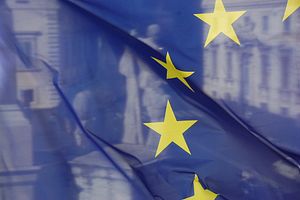By Eva Pejsova

On April 19, the European Union adopted its long-awaited strategy for the Indo-Pacific, formally the “EU Strategy for cooperation in the Indo-Pacific.” The 10-page-long Council Conclusions represent a balanced effort of the 27 European countries to formulate a common position in the evolving debate on the Indo-Pacific.
Here are the 10 main takeaways:
1. Working with partners. As its title suggests, the promotion of cooperation stands at the core of the EU’s approach to the Indo-Pacific. This applies not only to Europe’s long-standing friends and allies that share its values, but also to cooperation with “third countries for mutual benefit,” as well as enhancing cooperation within regional multilateral organizations, such as ASEAN-centered mechanisms or those within the Asia-Europe Meeting (ASEM) process. Flexible and pragmatic cooperation is part of Brussels’ long-term effort to enhance its strategic autonomy and promote its interests in the region.
2. China is in. Against the lively and often blurry debate on China’s role in the strategy Europe seems to have made up its mind: If China is part of the problem, it is also part of the solution. The need to work with China is implicit through the reference to the China-EU Comprehensive Agreement on Investment (CAI) and the ASEM process, of which Beijing is part. In many ways, this joins the recently published policy guidelines by Germany and the Netherlands, as well as the U.K.’s Integrated Review, in striking a more inclusive and balanced approach, recognizing the need to engage with China on issues of common interest.
3. No pointing fingers. In the tradition of most EU strategies, the document avoids naming and shaming. Instead of explicitly mentioning the usual suspects and culprits, it points out challenges for regional stability in the form of “geopolitical competition,” “tensions on supply chains and technological, political and security areas,” and the existence of threats to the “universality of human rights.” Emphasizing principles over actors allows for more consistency, making the strategy more resilient to change and capable of standing the test of time.
4. Strong on soft issues. The need to address global issues such as climate change, biodiversity loss, and the socioeconomic impact of the COVID-19 pandemic is among the top priorities for Europe and part of its highest added value for the region. From gender equality to Green Partnerships (supporting the Paris Agreement), and from sustainable ocean governance to cooperation in the health sector, the EU aims to take a lead in promoting the U.N. Sustainable Development Goal agenda in both bilateral and multilateral settings.
5. Maritime security: more action ahead. Free, open, and secure maritime supply routes are a vital strategic interest of the world’s largest trading bloc. Besides France and the U.K., Germany and the Netherlands are considering boosting their naval presence in the region, serving the interest and enhancing the maritime awareness of all EU member states. The protection of critical maritime routes through maritime domain awareness (MDA) capacity building has been the EU’s focus since its anti-piracy deployment in the Gulf of Aden in 2008 and is to be promoted across the Indian Ocean region and Southeast Asia.
6. High quality and sustainable connectivity. The 2018 “Strategy for Connecting Europe and Asia” (also known as the EU’s “connectivity strategy”) outlined the EU’s principles for a sustainable, transparent, and rules-based connectivity. Connectivity is a growing, multidimensional agenda that is likely to become more prominent in the future, with the EU allocating more resources, multiplying partnerships with like-minded countries (Japan, India, ASEAN) and connecting with existing initiatives in the region.ADVERTISEMENT
7. Assertive on trade. Europe become more ambitious and assertive in defending its economic interests. Following free trade agreements concluded with Japan, South Korea, Singapore, and Vietnam, Brussels is determined to deepen economic ties with other regional partners to level the playing field in the Indo-Pacific. Diversification of supply chains for a more resilient European economy and WTO reforms are also on the agenda.
8. Transnational security at heart. Addressing transnational security challenges is part of the EU’s DNA as a cooperative security actor. Brussels has demonstrated its regulatory power by taking the lead in promoting digital governance, data protection, and cooperation in cyberspace, which will continue under the new strategy. In a comprehensive fashion, the strategy aims to connect with its existing initiatives at the geographical margins of the Indo-Pacific, working with African partners and Pacific Island countries alike in addressing transnational issues such as ocean governance, disaster prevention and recovery, piracy, cybercrime, and trafficking.
9. The EU as a principled security player. Quite unsurprisingly for a normative power, values feature prominently in the strategy. The promotion of democracy, rule of law, human rights, and international law are not only seen as crucial for the stability and resilience of local societies, but also as a contribution to the EU’s long-term strategic interests in the region and its role as a global security player.
10. A milestone for the EU’s foreign policy. The Council Conclusions represent a consensus reached by the 27 EU member states and should be read as such. More than a decade since the first formulation of the Indo-Pacific concept by Japan, the publication of the strategy is a result of a long internal debate, reflecting the differences of strategic priorities of its members, Brussels’ evolving perception of regional security challenges and – to an extent – the nature of the EU as a foreign policy actor.
No comments:
Post a Comment